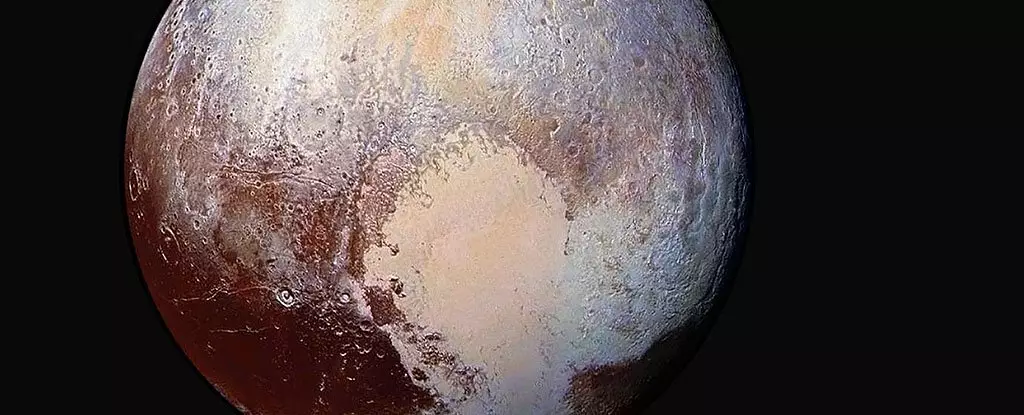Pluto, the dwarf planet at the edge of our solar system, is known for its distinctive “heart” feature called Tombaugh Regio. This heart-shaped region has intrigued scientists for years, with its bright appearance and unique geological characteristics. Researchers have long been puzzled by how this heart got started, but a recent study published in Nature Astronomy proposes a fascinating scenario that sheds light on its formation.
According to the study, a team of astronomers from the University of Bern in Switzerland and the University of Arizona developed a theory involving a primordial collision with a planetary body approximately 400 miles wide. They describe the process as a “splat,” where the impacting body collided with Pluto at a specific angle and velocity, creating the heart-shaped feature we see today. This theory challenges previous notions about Pluto’s geological evolution, particularly the idea of a deep subsurface ocean that was once believed to exist.
Unraveling the Geology of Pluto
The study focuses on the western half of the heart, known as Sputnik Planitia, a large teardrop-shaped region that is significantly lower in elevation compared to the rest of Pluto. This region is rich in nitrogen ice, which likely accumulated rapidly after the impact, forming the distinctive appearance of the heart. The eastern half of the heart also contains a layer of nitrogen ice, although it is thinner than the western side. Researchers are still investigating the origins of this region but believe it is interconnected with the processes that shaped Sputnik Planitia.
Computer Simulations and Insights
To understand the impact that led to the formation of Pluto’s heart, the researchers conducted a series of computer simulations. These simulations explored various scenarios involving the size, composition, velocity, and angle of approach of the impacting body. The results indicated that a 400-mile-wide object composed of 15% rock, entering Pluto at a 30-degree angle and low velocity, was the best match for creating Sputnik Planitia’s shape. The impact of this object would have resulted in a splat, rather than a traditional impact crater, forming the distinct teardrop shape of the heart.
Revising Our Understanding of Pluto’s Evolution
The study challenges previous assumptions about Pluto’s geology, particularly the role of a deep subsurface ocean in shaping its features. By proposing the “splat” theory for the heart formation, researchers are opening up new possibilities for understanding the ancient history of Pluto. This research could also have implications for other objects in the Kuiper Belt, offering insights into the geological processes that shape icy worlds in our solar system.
As scientists continue to unravel the mysteries of Pluto’s heart formation, there is a renewed interest in studying other Kuiper Belt objects. The New Horizons spacecraft, which provided valuable data on Pluto during its flyby, is still exploring the outer reaches of our solar system. Recent discoveries of higher levels of interplanetary dust suggest that there may be more to learn about the Kuiper Belt and its icy worlds. Mission scientists are eager to identify new targets for exploration in the coming decades, expanding our knowledge of these distant regions.
The study offers a fascinating glimpse into the complex geological history of Pluto and challenges existing theories about its evolution. By embracing new possibilities and scenarios for the formation of the heart feature, researchers are expanding our understanding of the processes that shape worlds on the outer edges of our solar system. The ongoing exploration of Pluto and other Kuiper Belt objects promises to unveil more secrets and surprises in the years to come.


Leave a Reply